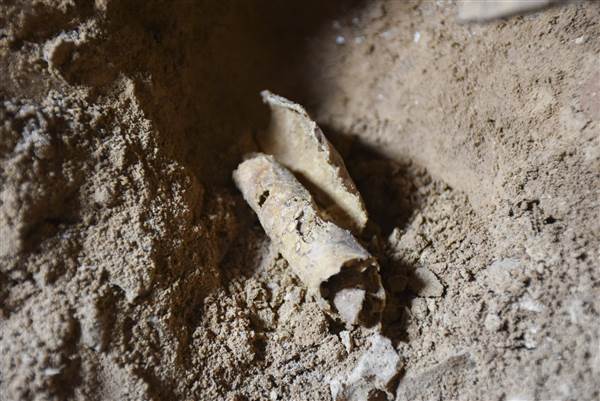
American paleontologists recently found the world's oldest stone tools, believed to be carved some 3.3 million years ago during the Pliocene period.
The Smithsonian Magazine reported that the set of carved tools was discovered at the Lomekwi 3 site in West Turkana, Kenya. Amounting to 149 tools in all, they include hammers, anvils and carved stones. The stone tools were purportedly used for food preparation, such as cracking nuts and tubers and carving fallen tree trunks for edible insects.
Prior to the discovery of the Lomekwi stone tools, earliest similar evidence had been dated from around 2.6 million years ago coming from the Ethiopian deposits which were found close to the fossil remains of the first representatives of the Homo habilis, named for their unique ability to use their hands to produce tools. Habilis is based on a Latin word that means "handy" or "skillful."
The discovery challenges the existing idea of humanity's evolutionary origins. In a May 2015 paper published in Nature, study authors Sonia Harmand and Jason Lewis wrote that the finds at Lomekwi 3 "predate the Oldowan industry by 700,000 years and marks a new beginning to the known archaeological record." The Oldowan is the archaeological term used to refer to the earliest stone tool archaeological industry in prehistory.
Oldowan tools were used during the Lower Paleolithic period, 2.6 million years ago up until 1.7 million years ago, by ancient hominids across much of Africa, South Asia, the Middle East and Europe. This technological industry was followed by the more sophisticated Acheulean industry. (Related: Innate ingenuity: Ethiopian dig unearths ancient stone tools, some of the oldest ever discovered at more than 2.58 million years old.)
"These tools shed a light on an unexpected and previously unknown period of hominin behavior and can tell us a lot about cognitive development in our ancestors that we can't understand from fossils alone. Our finding disproves the long-standing assumption that H. habilis was the first tool-maker," Harmand said.
Lewis added: "This discovery challenges the idea that the main characters that make us human – making stone tools, eating more meat, maybe using language – all evolved at once in a punctuated way, near the origins of the genus Homo. The premise was that our lineage alone took the cognitive leap of hitting stones together to strike off sharp flakes, and that this was the foundation of our evolutionary success."
Who made the tools found at Lomekwi 3?
The discovery by Harmand, Lewis and their colleagues in Kenya appeared to revolutionize archaeology and force history to be rewritten. However, it poses two questions: Who made the tools and how are they linked to the Oldowan stone implements?
Anthropologists posited that individuals from the Homo genus, ancestors of the modern H. sapiens, were the first to develop such tools. However, H. habilis – the first hominids to make stone tools – only appeared hundreds of years later.
Harman and Lewis pointed to two possible creators of the Lomekwi stone tools. One is the Kenyanthropus platyops identified by paleontologist Meave Leakey and her colleagues, and the other is an unknown member of the human genus who once lived in the area. (Related: Scientists find new mystery human ancestor whose DNA remains in people today.)
Another question that emerged is the connection between the Oldowan tools and the earlier Lomekwi counterparts. The implements found in Kenya had been hit against once another to detach stone flakes in a process called knapping. "You can tell these scars [on the stone tools] are organized," Harmand said.
There are two possible ways the Lomekwi tools were made based on further analysis on the tools' scars and attempts to replicate their production. First, the individual might have set the stone on a flat rock and chipped away at it with another rock just like a hammer and anvil. Second, they could have held the stone with two hands and hit it against the flat rock, chipping away small bits.
The Oldowan toolmakers used a different method to make stone implements. They held a rock in each hand and struck both together with the right force at just the right angle – which would have called for more dexterity.
Harmand said: "We've jumped so far ahead with this discovery, that we need to to try to connect the dots back to what we know is happening in the early Oldowan."
Discoveries.news has more articles about the finds at Lomekwi and other archaeological revelations.
Sources include:
Please contact us for more information.





















